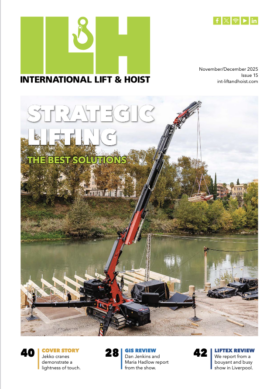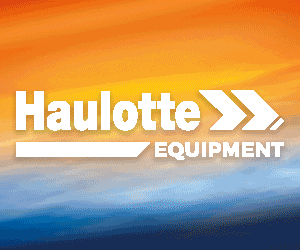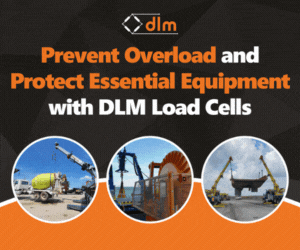Erikkila Group Chairman Explains Why Old Fashioned Values Remain the Cornerstone of Business
The family business Erikkila Nostotekniikkaa Oy—Erikkila Oy, since 2010—has its roots in Vyborg. In 1912, Toivo Erikkilä, grandfather of Juha Erikkilä, founded a firm called Toivo Erikkilä in the town, now in Russia, near the Finnish border.
Erikkila OY has grown into a global manufacturer of ergonomic light crane systems, bridge cranes and robotic cranes. The company also imports other lifting equipment to support its own manufacturing, such as vacuum lifters, lifting tables and chain hoists.
“Light cranes are our bread and other products our butter,” says Juha.
His own journey in material handling began in 1971, when he travelled to Germany and worked at Hadef over the summer. He still remembers those who gave him a helping hand along the way. “Many thanks to Mr. Klaus Uebel, owner of Hadef, who gave me that opportunity,” he says.
“Five years later was my first year as managing director of Erikkila. We did not have at that time any of our own products, and the focus was on trading. Our customer base was Finnish shipyards, paper and chemical industries.
“Early in 1977, I visited Valmet Tractor Works, where I learned about imported light cranes. Later that evening, we decided to design a light crane system [LCS] of our own. Deliveries started a few months later.” The business has never looked back. Initially, “the customers were in all kinds of industries from machine building, to food producing. LCS are now our best seller.”
In fact, Juha rates his biggest achievement as the brand becoming known worldwide as one of the leading light crane systems producers, “and a benchmark in safety,” he adds.
“The domestic market in the late 70s was growing and my job was sales, sales and sales. In the 80s my role as leader and innovator in the company was getting stronger. After a deep recession in the early 90s my role changed again to R&D and sales of robotic cranes.
“After 2000, I took responsibility for Finnish production in Masala and continued as managing director. At the same time I had a good team to design a new generation of LCS, which made us an even bigger hitter.”
Generation game
Juha Erikkilä is a third generation entrepreneur and chairman of Erikkila Group. He was born in 1952, is married to Kirsti; “we have three children and six grandchildren,” he beams. Two of his children work at the company. Eldest son Mikko, aged 30, was named managing director in September 2010; Matti, 28, is marketing manager; daughter Anna is not in the business.
His biggest influence was his father, which probably runs in the family. “He told stories about climbing up harbour cranes for inspections in the 50s when he was working for the Finnish Electric Inspection,” Juha recalls.
Following the nomination of Mikko Erikkila, fourth generation, as the company’s managing director, Juha was nominated as chairman.
“Two months later, one of our key people suddenly passed away and I was also nominated as our Masala works production manager. This job became very interesting; we were enlarging the factory with an extra 1,600 square metres, and business growth was over 80 percent last year [2011].”
The company’s head office and factory are in Kirkkonummi, Masala, near Helsinki in Finland. In addition, it has production in Tallinn, Estonia, at a subsidiary called OÜ Eesti Kraanavabrik, founded in 1991. Since 2002 Erikkila has had a sales office in Ängelholm, Sweden and, in October 2006, the company founded a subsidiary in Sweden, called Erikkila AB. In 2005, subsidiary OOO Erikkila was founded in St. Petersburg, Russia, to take responsibility of the developing markets in the region, while, four years later, a sales office was opened in Germany, taking responsibility of sales in Central Europe.
“We are a full service crane supplier. Our customers are all sizes of metal works shops, plastic, aluminium, chemical and food stuff producers, assemblers or manufacturers,” Juha says.
Innovation
Juha points to “big changes”—the collapse of the Soviet Union; Finland joining the European Union and the single currency; success stories such as Nokia and Kone—which have given small enterprises opportunities to join in the export growth. “We try to benefit from this and be worthy of the Finnish reputation for innovation.”
Finland has become a modern, western, industrial country with its own exportable know-how in innovation, design and flexibility. But not everything has changed. “It is all about working with people,” Juha says. “This has not changed. You have to respect and you have to be respected. Relationships and reputation are what matters.”
That said, “our innovation and mass tailoring to meet customer specific applications is not well known among end users. We are the only large LCS producer, which has no electric chain hoist of its own. Our brand has limited visibility among end users owing to the fact that our products are partly sold through over 10 OEM partners in export markets.
“Innovations such as the patented overload indicator and our widely copied raised bridge [for short head room] are not recognised as Erikkila innovations. Our 70-strong staff has a long history in business and experience of a wide variety of industries and products. Our values are deeply felt in our organisation: respect, improvement, service, profitability. But first comes customer orientation.”
In 2011, the company launched the Spartan concept of free standing bridge cranes, up to 10t. “We have created a new crane category of standardised free-standing bridge cranes. We worked for a long period closely with companies like R. Stahl and Morris, but unfortunately for us both were bought by Konecranes, our major competitor—and we lost most of this business.
“We then realised that we cannot rely on anybody else. The Spartan concept is an addition to our product portfolio based on our experience of light cranes [34 years] and automated cranes [200 deliveries in 20 years].
“We listen to our customers and resellers. New developments can be based on customer requirements and, when needed, be implemented quickly. Testing the durability has become very important for us. We analyse competitors and learn from them, but avoid copying non-durable designs. R&D goals are to make durable and reliable products with less electronics that are easy to install and maintain.
“Finnish manufacturing is widely spread in just about all industry sectors. We have to be able to service a really wide range of needs. This is, on one hand, an advantage in that you become a kind of mass customiser for all industries but, on the other hand, in no industry will you be recognised as an industry leader,” Juha concedes.
State of the market
“The market is getting consolidated, which will give entrepreneurs opportunities to gain market share through innovation. The recession was deep, but short. 2011 order books were good but price levels low. 2012 will be challenging, but so far so good.
“European manufacturers are leading the way in technology and safety. The future will be rosy for those who are able to compete in technology, quality, price and customer service. European products are desired in all markets. Quality and safety sell.
“True,” he adds, “industry is moving east. The BRICs [Brazil, Russia, India and China] will continue to import technology and manufacture locally. This is where the growth lies. We cannot count on innovation being an exclusive domain of western manufacturers. We shall all learn from the BRICs, and we must do this by establishing our own presence in these markets.
“Domestic price competition is tough. Every company has its challenges. Some believe in subcontracting, some in own production. Finland is as good as any other European country in this respect. What we Finns lose in labour cost we get back in productivity. Those who are able to spend in R&D will benefit from this. There are opportunities in surrounding countries. Market shares might slowly change when some smaller manufacturers give up the game.”
The Finnish market has two outstanding features: it is small and the home of Konecranes, “therefore, unique”, Juha says. Konecranes dominates in bridge cranes with its own brand and SWF, which was the company’s first German acquisition. Street, Demag, Stahl (also Konecranes-owned) and Abus have their own high profiles. “But we are the market leader in LCS,” Juha adds.
“Workshop crane manufacturing is not very sexy for the moment. Financing is not as easy as for new ‘angry bird’ type IT hype companies. Although the business recovered rapidly during 2011 to 2008 levels —after seeing in 2009-2010 a 50 percent drop down—it is hard to prognosis which countries and markets will continue growth or take steps backwards in 2012.”
Presence in Brussels
Erikkila has been active in FEM, the European manufacturers association of materials handling, lifting and storage, for the past 11 years. Juha was elected as chairman of Finnish Technology Industry FEM Cranes and Lifting Equipment Group and, between 2006-2008, to the board of FEM as Finnish Industry representative.
Today, he is on the FEM board as president of PG Cranes and Lifting Equipment. “A very challenging job has been the chairmanship of Working Group Light Crane Systems [FEM Rule 9.771, which will be launched in 2012] to be able to influence the future safety of LCS,” he says. “This might be one of the last FEM rules ever. Today, standards in our industry come out of CEN 147.”
FEM has a key role to play, not just for Erikkila, but all manufacturers across the region. “Material handling industry presence in Brussels is based on FEM,” says Juha. “FEM’s role is to influence EU legislation and CEN standards. Also, market surveillance and relationships with counter associations in other continents has become an important part of FEM.
FEM was founded 1953 to harmonise domestic standards of nine industrial countries to one European standard. “This has been a success as we all know,” he concludes.











